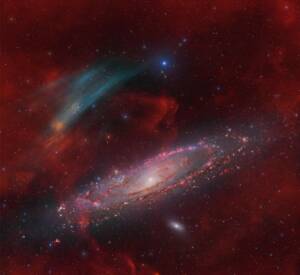
Discovery of the M31 [OIII] emission arc
Recently, a major discovery by an international team of amateur astronomers and scientists has become a huge online hit, and this new discovery is just located in one of the

Hello Tommy, thanks for accepting our interview invitation. Congratulations on winning the ASIWEEK competition in week #36/2023!
My name is Tommy Lease. I’m 41 years old and live in Parker, CO, USA. I am a Field Engineer for a major telecom company. For hobbies, my main passion is astrophotography, but I also enjoy camping and fishing in the beautiful mountains of Colorado with my wife and two dogs.

I started my journey into astrophotography imaging the Milky Way with my Nikon DSLR and a kit lens. I was hooked from there and purchased my first telescope a few months later. This all started about 4.5 years ago.

The biggest changes in astrophotography for me were improvements in sensor tech like the ASI533/ASI2600 cameras. They produce such clean/rich images and no longer require hours and hours of exposure time, especially when paired with a faster scope such as an f/4 Newtonian. The other game changer for me was the ZWO EAF, this really helped streamline the process of remote imaging and get tighter stars. Lastly, honing my post processing skills, using new software such as Pixinisght with RC Astro’s BlurX, NoiseX and StarX.

My winning image was of the Cygnus wall in the North America Nebula (NGC 7000). I took this image from my Bortle 5 backyard in Parker, CO, USA. The image details are as follows-


ZWO ASI533MM-Pro + Antlia 1.25″ 3nm Ha/OIII/SII + Stellalyra 10″ f4 Newt at 750mm fl + Starizona Nexus CC/Reducer at f3 + ZWO EAF + EQ6R-Pro
This depends on how many clear nights are coming up and how invested I want to get into the image. Generally, I try to get a minimum of 5-10 hours, but my longest is around 47 hours.
I find processing broadband images the toughest, especially if you didn’t get good calibration frames. Getting the background to come out looking good and not having any gradients is a real challenge. Especially when using a fast Newtonian like I do.
All of my workflow is done in Pixinsight. The process usually goes like this, but can vary from time to time depending on the target:
1. Stack images with WBPP
2. Dynamic crop
3. BlurX
4. Dynamic Background Extraction
5. Background Neutralization
6. Color Calibration (broadband images only)
7. Generalized Hyperbolic Stretch
8. Remove stars with StarX
9. Curves transformation
10. Dark Structure Enhance
11. HDR Multi-scale Transform
12. NoiseX
13. Add stars back using this equation ~((~starless)*(~stars)) in PixelMath
14. Star reduction
My most memorable moment wasn’t a good one! There was one night a couple of years ago when my entire rig fell off a 5 ft wall. Luckily nothing was badly damaged, but I will never forget it!
This is tough because I use two Astro rigs, so when it’s clear out, I am very busy with Astro. But my rigs are pretty much automated, other than a full observatory. So, I just set up the imaging sessions before I go to bed and then stack the data the next morning. Then the following night I will process the data.
When I won two APOD’s within two months last year 2022.

Learn how to use the gear you have; learn how to process the images you get with that gear. This way you know if the hobby will be something you want to invest more money into. Get yourself a solid equatorial mount to start with. Then invest in a scope and camera when your ready. For me, spending more money on the camera is a bigger deal than the scope. Also, spend time watching YouTube tutorials on post-processing. And practice processing and re-processing your images. Lastly, use websites like Astrobin to gauge how your images could/should look. And most importantly, have fun!
I started using ZWO products about 4 years ago. The only suggestion I have is to produce a micro 4/3 camera with sensor tech like the 533/2600. This would be a good mid-level camera option and not everyone likes the square sensor of the 533.

Recently, a major discovery by an international team of amateur astronomers and scientists has become a huge online hit, and this new discovery is just located in one of the
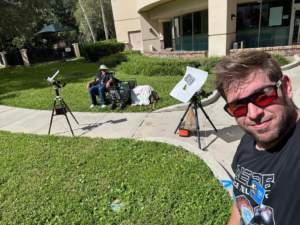
That 11-year-old boy staring at Horsehead Nebula photo would never have imagined… Decades later, he’d be capturing amazing deep-sky images from his Florida backyard! “ It was amazing to see

Hello,Sara Harvey,thanks for accepting our interview invitation. Congratulations on winning the ASIWEEK competition in week! Q1: At first, congratulation that your nice image won #ASIWEEK. Can you introduce yourself to
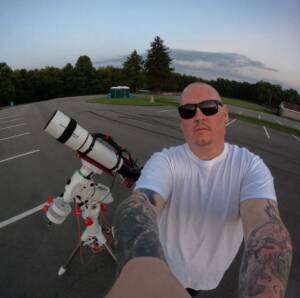
Astrophotography is more than just capturing images of the night sky—it’s a journey of discovery, patience, and creativity. For this passionate astrophotographer, what started as a chance encounter with a
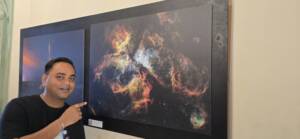
Taranjot Singh, an Indian origin Australian astrophotographer who is making waves on the international stage. Taranjot has been recognized as one of the Top 5 finalists in the prestigious Siena
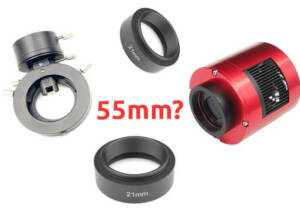
The back focal length is advised by telescope manufacturers. Since most telescopes have a 55mm back focal length, we are here to provide detailed instructions for all ASI cooled cameras.Please